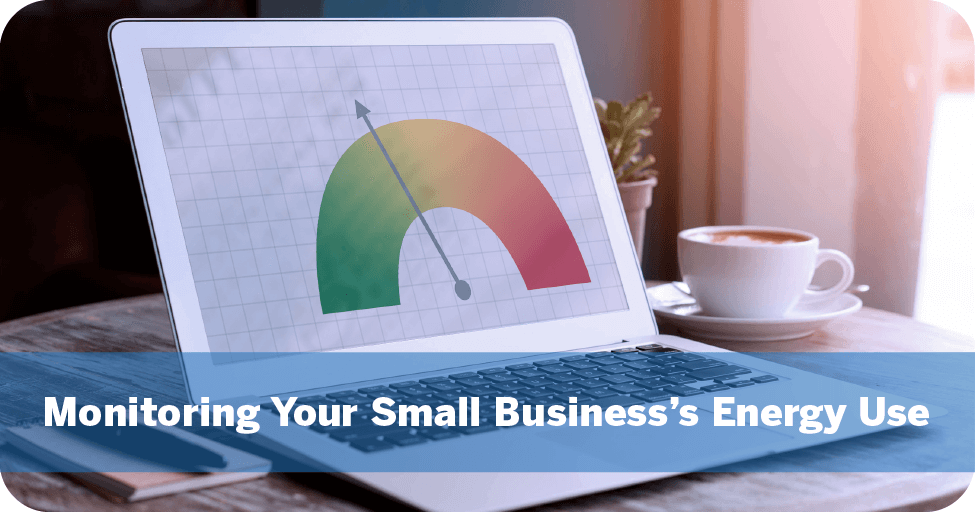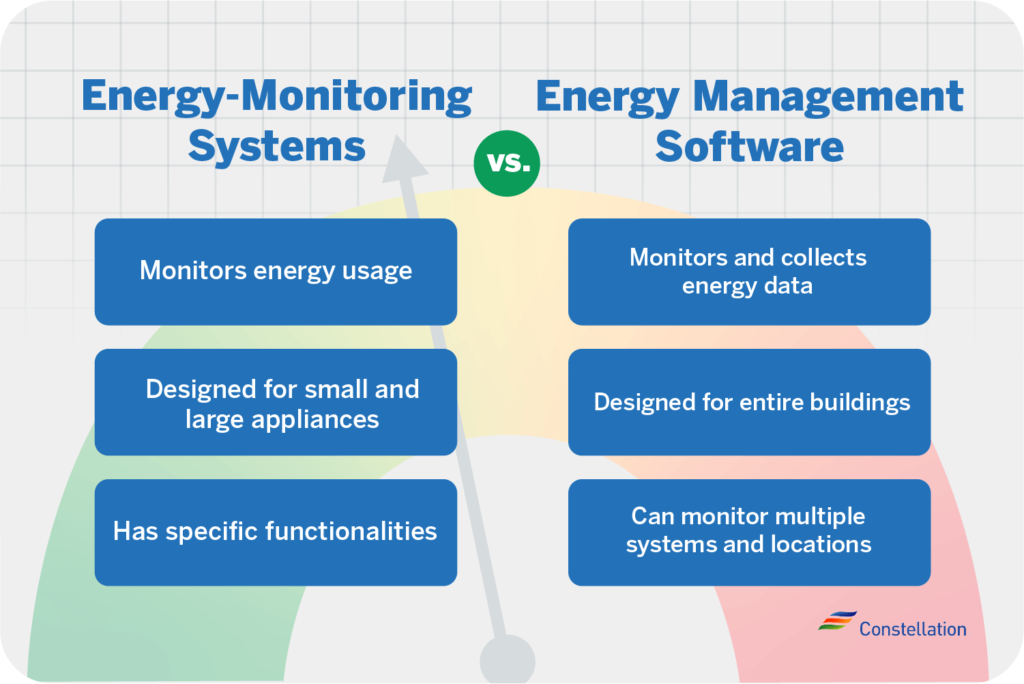
- Category:
Small Business Energy Savings -
Last updated:
April 16, 2025
How to Monitor Your Small Business Energy Usage
Small-business owners know that maximizing their energy efficiency can make a big difference in their business. New technologies are rolling out every day, and business owners can now use data to identify the best opportunities to give them an edge in competitive marketplaces.
With the right data, business owners can identify emerging issues before they grow into a serious problem. And data related to energy is no exception: An energy-monitoring system can help owners identify ways to improve energy efficiency that can cut utility costs by up to 30%.
Why should you monitor your small business’s energy usage?
An energy-monitoring system offers multiple advantages, both in terms of savings and customer satisfaction. Monitoring energy use offers the following potential benefits:
- Reducing your energy usage. Small businesses in the United States spend $60 billion annually on energy. Reducing your energy use saves on energy costs, lowers pressure on the national energy grid and helps you create a more sustainable business. The potential benefits to the environment almost go without saying.
- Increasing the ROI of your equipment. Energy monitoring can illustrate how smarter energy practices can improve equipment efficiency and extend equipment life, providing you with a higher return on investment for essential appliances, computers and machinery.
- Automating your facility management systems. Energy monitoring systems help small-business owners identify energy use trends while implementing and automating energy-saving strategies, such as scheduling when business technology powers on and off.
- Preventing excess energy waste. Some energy-monitoring tools track energy waste as well as usage, providing insight into how to make your energy use as efficient as possible.
- Making your customers happy! Consumers increasingly want to support small businesses that care about the environment and that are active in the local community. Your commitment to saving energy will pay dividends in customer respect and loyalty.
What is an energy management system?
An energy management system (EMS) — sometimes called an energy management control system, a building management system or a building automation system — is a network of devices that can be used to monitor and control energy usage in energy-consuming equipment. Lighting, HVAC and refrigeration equipment are some of the common kinds of devices that can be better utilized through an EMS.
The basic components of an energy management system are:
- Sensors. For energy to be controlled, it must first be measured. Temperature, pressure and light output are some of the things that sensors will monitor in an EMS. These devices provide business owners with crucial information to help determine their next steps.
- Controllers. In basic terms, the controller is a device that receives the measurements sent by the sensors, compares them against desired energy levels and then issues a signal (if necessary) to a device to bring temperature, pressure, lighting levels, etc. to the preset desired level.
- Controlled devices. These devices are the equipment that responds to signals sent by the controllers. Controlled devices can be anything from an HVAC system to a lighting system to an appliance.
How can you monitor your business’s energy usage?
Small-business owners have two main options in energy-monitoring systems: energy monitors and energy management software. Which method works best for you depends on your business and energy efficiency goals.
1. Choose between energy monitors and energy management software
The first step in monitoring your small business’s energy usage is to establish what tools you need. Energy monitors are smart devices used to gather data on specific systems, such as small or large appliances. Energy management software is designed to report on and monitor the energy usage of larger systems, such as entire buildings.

Energy monitors
Energy monitors can be attached to appliances or energy meters to track your energy usage. Today, many offer wireless capabilities and come with smart-assistant functionality. If you’re only concerned with the energy load of a large appliance or two, energy monitors may be the right choice for your business. Monitors can also be attached to circuit breakers, but this usually requires installing them directly into the building’s electrical system.
When looking at energy monitors, you should evaluate different brands and models, since they often come with different capabilities. Check into a few different energy monitors to ensure that the one you choose offers the specific functions you’re looking for.
Pro tip! For small businesses that don’t have the need or resources to invest in energy-monitoring systems, smart-plug uses include the option of monitoring energy usage and scheduling when appliances (such as wired or wireless routers) turn on and off.
Energy management software
Energy management software monitors and reports on a range of energy-related data, including utility bills, real-time metering, lighting controls, carbon emissions, HVAC energy use, security systems and energy audits. Energy management software is the right energy-monitoring system for business owners seeking to set goals and make real-time responses to energy issues. This software is especially useful for businesses that need to monitor multiple energy systems or locations.
As energy monitoring grows in necessity, more small-business owners are turning to energy software to track their usage. Small businesses should examine potential software closely to determine which monitoring system is best suited for their needs.
2. Benchmark your energy use
A great place to start, whichever method you choose, is by energy benchmarking. This refers to comparing energy data to a set standard determined by your industry. By comparing energy use to your industry’s standard usage, you can evaluate the efficiency — and competitiveness — of your energy-saving efforts.
One such tool that’s ideal for any small business — and is free — is the ENERGY STAR®️ Portfolio Manager. It’s an industry-leading benchmarking tool for how buildings use energy: 40% of U.S. commercial building space is benchmarked in the system, including half of all Fortune 100 companies. The system is typically used to track greenhouse gas emissions, energy use and water consumption. You only need your energy bills and some information about your building to start using the system.
3. Identify your biggest energy-saving opportunities and make changes
By analyzing the information relayed by an energy management system, small-business owners can find inefficiencies and wastes within their current energy usage. For instance, you might learn that some equipment is left on when it is no longer needed. Or perhaps you realize that there are times throughout the day (say, off-peak hours) where the levels of some of your devices could be lowered without affecting your business.
You might even discover that some of your equipment is old or inefficient and could be replaced outright. The opportunities are endless! The energy savings reaped by small-business owners with energy management systems is limited only by their own vigilance and commitment.
4. Monitor your changes and adjust from there
Once you make changes to your energy usage, an energy management system can track the effects of your decisions. Naturally, the first adjustments tend to be the biggest — the low-hanging fruit that is easily identified and corrected for. Once those changes are in place, you can proceed to fine-tuning your process and find energy savings in less-obvious inefficiencies.
Another scenario to consider is a change in your business that leads to new patterns of energy usage. A change in hours of operation, products produced, production level or equipment will require new strategies to find energy savings. An energy management system can better help you find them.
With so many tools available, monitoring your small business’s energy usage is an easy way to improve your business in ways that were previously impossible. By using these tools with energy usage report emails from Constellation, you can streamline your small business’s energy use and reduce waste, free up resources and reduce your company’s environmental footprint.
With all that in mind, what’s not to like? Start improving your business’s energy efficiency today, or check out more articles for business owners to learn more.




